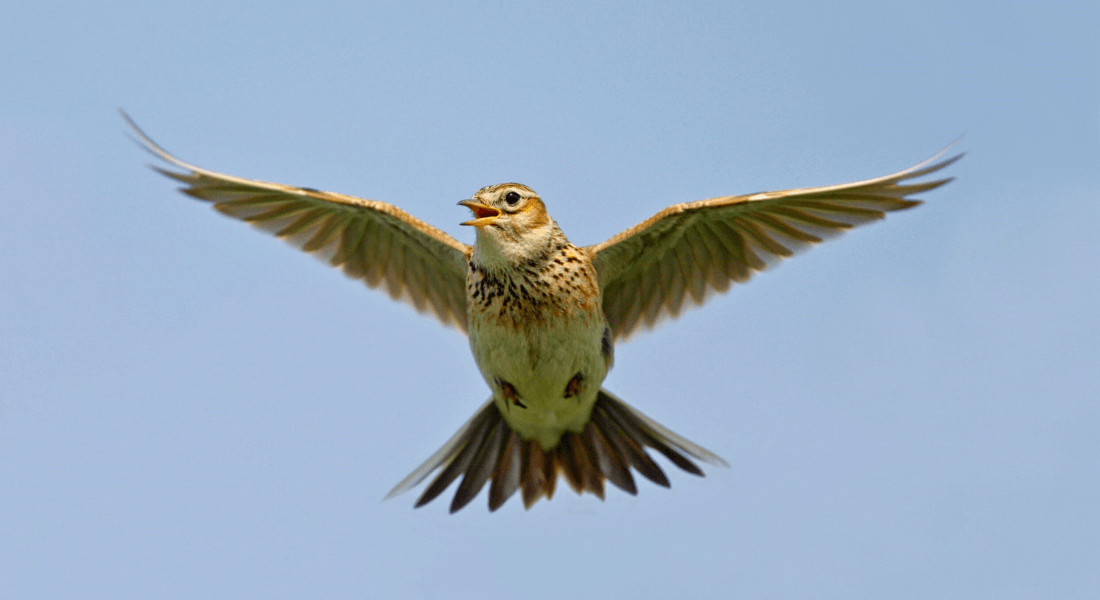Climate change and land use impact local bird populations
Over the past forty years, Danish bird populations have undergone dramatic changes. New research from the Center for Macroecology, Evolution and Climate analyzed over 2.4 million bird observations and sheds light on how shifts in climate and land use are reshaping bird communities across the country.

It is widely known that we are in the middle a global biodiversity crisis. Denmark is no exception. With its long history of landscape modifications, Denmark is now dominated by agricultural land with fewer habitats for wild species. On top of that, climate is also changing.
From 1991 to 2020, Denmark’s average annual temperature increased by 1˚C, with winters warming even more. Rainfall also rose by 6.6%, aligning with global climate change trends. In combination, these changes are affecting wild birds in many ways.
For many years, skilled volunteers from Birdlife Denmark have visited routes across the country and counted all the birds they hear or see. Based on this unique source of information, a new study by Charles Davison, Naia Morueta-Holme, and Carsten Rahbek from the Center for Macroecology, Evolution and Climate has assessed the trends and drivers of local bird diversity between 1976 and 2020.
Bird numbers are declining faster than expected
Based on more than 2.4 million bird observations, the study found a small decline in local species richness. On average, a volunteer found 40 species along their route, but one species less for every decade. Yet, hidden behind this moderate loss were considerable changes in other facets of biodiversity.
Bird abundance, the total number of birds at a site, declined sharply by 7% per decade on average. This decline is higher than the trends estimated in previous research for Europe and North America of 5% and 6%, respectively.
-It is especially the small, flocking bird species that have been disappearing. The local bird biomass, however, has stayed the same through time, likely because large birds like the greylag goose, European herring gull, and great cormorant are increasing in abundance, explains lead author Charles Davison, postdoc at Aarhus University and former PhD student at the University of Copenhagen.
Imprints of warming climate and human land use
Almost half of the routes surveyed showed a noticeable change in the species of birds observed over time. This shift was much greater than what would normally be expected from natural ecological processes, suggesting that other factors, such as climate change and human activities, are causing these changes.
Indeed, birds have been responding differently depending on the degree of warming and human land use. Sites that have warmed the most actually tended to increase in species richness and functional diversity – the range of different roles species play in an ecosystem - likely due to the arrival of species better adapted to warmer conditions.
On the other hand, farmland and urban areas are becoming more homogenous in terms of species composition, meaning that you are now more likely to see the same few bird species along a route instead of a larger variety. Surprisingly, forests also have lost the most species richness, even though the forest cover in Denmark has increased.
Read also: Vegetation structure from LiDAR explains the local richness of birds across Denmark
Senior author, Associate Professor Naia Morueta-Holme explains that the finding likely reflects the intense management of Danish forests:
-Even though the Danish forest area has increased from 2006 to 2022 by 16%, the extraction of wood has gone up by 30% in the same period. Intensively managed forests rarely have the diversity of vegetation structures that are needed to support a high diversity of forest birds. So, this is probably part of the reason why we found losses in forested areas.
-The dramatic loss of individual birds we found across Denmark shows that we need more and better nature if we want to reverse the trend, highlights co-author Professor Carsten Rahbek, and continues:
-For forest birds, for instance, it will be key to ensure forests with many layers in the canopy and vegetation structures that can provide good habitats for nesting and feeding.
Overall, the findings highlight the complex and often surprising ways that bird communities respond to environmental changes, concludes Naia Morueta-Holme:
-The interplay between climate change, land use, and biodiversity highlights the need of adopting a multidimensional approach to biodiversity monitoring, as relying solely on species richness can obscure underlying ecological dynamics.
About the study
Davison, C, Rahbek C, & Morueta-Holme, N. Changes in Danish bird communities over four decades of climate and land-use change. Oikos (2024). DOI: https://doi.org/10.1111/oik.10697
Contact
Charles Davison
Postdoc
c.davison@bio.au.dk
+45 60 71 51 64
Naia Morueta-Holme
Associate Professor
morueta-holme@sund.ku.dk
+45 35 33 53 29
